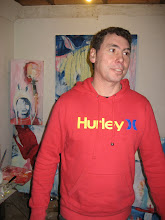CROSS CULTURAL FANTASIES
James Meyer, “The Functional Site; or, The Transformation of Site-Specificity”. Space, Site, Intervention: Situation Installation Art, ed. Erika Suderberg, Minneapolis: University of Minnesota Press, 2000, pp. 23-37
In his essay, James Meyer refers to what he calls the “cross-cultural fantasy of the other”(35). A supposition based on a not so solid foundation, forming mental images of other places.
Guidebooks can help create these fantasies as they direct visitors or tourists to places of interest. They are a compilation of information in printed form and tourists find them invaluable. As they guide of strangers or visitors through a district giving them a description of the places or scenery of interest they tend to point out certain things and not others. In other words, guidebooks can give a somewhat biased view.
One of the initiators of what was to become tourism was Thomas West in his guide to the lakes for landscape lovers of landscape studies. This and books like it helped change the British mind and enabled it to view the landscape for visual pleasure. With the guidebook and Claude glass in hand the British of the 18th century ventured into the countryside. With the Claude glass one could view the land as scenery and compose the landscape. Throughout his essay Park refers to the landscape as theatre and us as the audience. In his essay the Claude glass is used as a metaphor to turn nature into scenery.
The idea of an illusion of a foreign place is highlighted by artist Jan Muller. In the exhibition, “ Inter-pellations” Muller looks at European -American cultural relations by using guidebooks to direct visitors around fashionable areas of SOHO in New York. They position the tourist within the space and swiftly guide them through upmarket restaurants, fancy boutiques, and swanky art galleries quenching a thirst for the fresh and new. A few years earlier Muller explored this idea in reverse with a work titled bookcase which explored the American thirst for European history.
The landscape in New Zealand was to become a commodity. “... its’ landscape had been constantly, the most beautiful scenery in the world”1. Colonial immigrants had a mental picture of New Zealand thanks to idealised images presented by writers and artists. This image was a cross-cultural fantasy
1. Geoff Park “Theatre Country”, Theatre Country: Essays on Landscape and whenua, Wellington: Victoria University Press, 2006, pp.113-127.
Subscribe to:
Post Comments (Atom)


I was interested by your comment that guidebooks give a biased view. Perhaps the bias is formed in the guided as they impose their own values, wishes and expectation on the ‘functional site’ re-presented in the book.
ReplyDelete